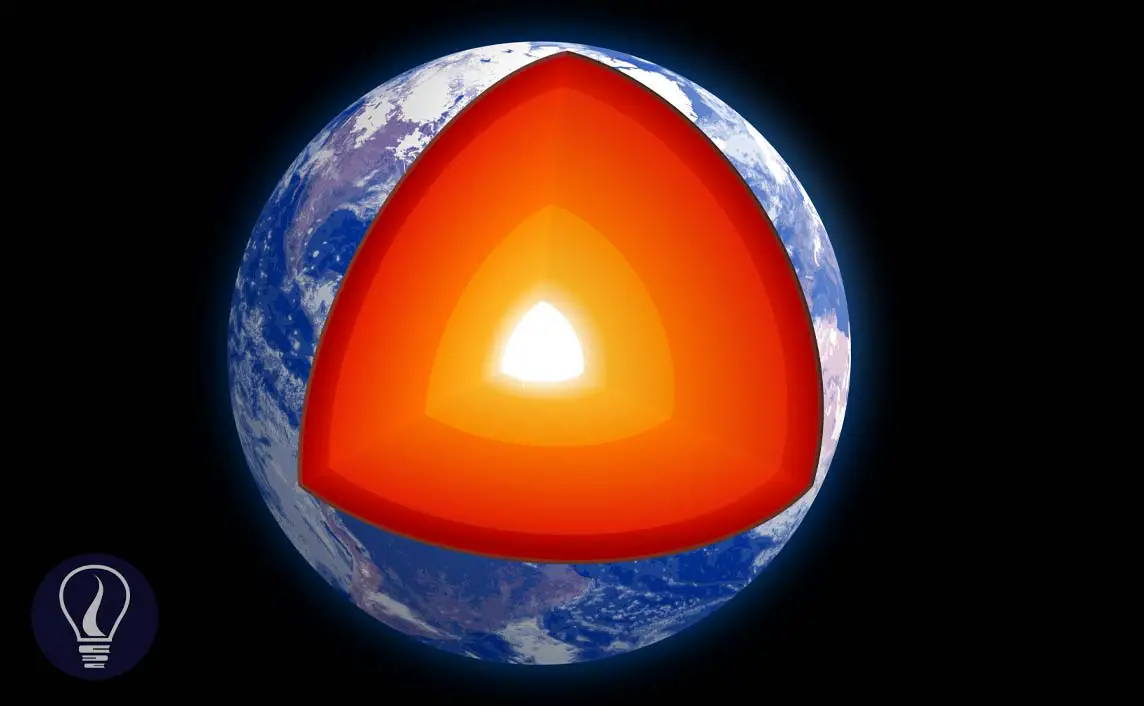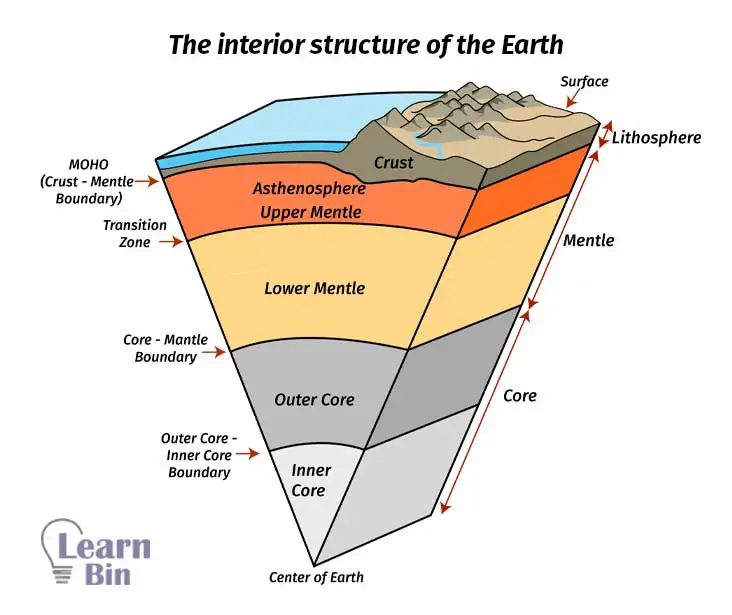More results...


The interior structure of the dynamic Earth shows a radially layered structure. Five primary layers are chemically and physically different from each other. The chemical composition and the physical state of each layer affect the surface of the Earth as well as the life on the Earth. Changes in inner layers may cause earthquakes and volcanic eruptions in outer layers. The primary layers of the earth are the crust, upper mantle, lower mantle, outer core, and inner core.

The outer layer of the earth's geosphere is called the 'Crust'. Compared to the other layers, the crust is the thinnest layer of the earth, and it represents only 1% of the earth’s mass. But it contains all the living organisms on the earth. The crust is consisting of minerals and rocks such as granite and basalt.
The earth's crust is divided into two. They are oceanic crust and continental crust. The oceanic crust is underlined by the oceanic basin. It is relatively thin and much denser than the continental crust. The Continental crust is the part of the crust which make the landmass. The Continental crust is much older and more complex than the oceanic crust.
| Oceanic crust | Continental crust | |
| Thickness | 6 km – 8 km | 30 km – 40 km |
| Average density | 2900 Kg/m3 | 2700 Kg/m3 |
| Major components | Oceanic sediments Basalt Gabbro | Granite Basalt |
The lithosphere is the layer that contains the Crust and the upper part of the upper mantle together. The lithosphere contains the solid outer part of the earth. The lithosphere is lying on the asthenosphere. The deeper part of the upper mantle is known as the asthenosphere. It is weak, hot, and more liquid than the lithosphere. The lithosphere layer is floating on the more liquid asthenosphere layer. The lithosphere is also identified as the oceanic lithosphere and the continental lithosphere.
| Layer | Thickness |
| Oceanic lithosphere | 80 km – 100 km |
| Continent lithosphere | 150 km – 180 km |
Lithosphere: the solid part of the earth’s outer layer, which is divided into large and irregularly shaped slabs naturally. These plates are called “tectonic plates”. Tectonic plates are divided into three categories as major plates, minor plates, and microplates according to their sizes. Major plates are the largest tectonic plates with an area greater than 20 million km2. Microplates are the smallest tectonic plates with an area of fewer than 1 million km2. Tectonic plates with an area between 20 million km2 and 1 million km2 are minor plates.
Earth’s mantle is the layer that lies between the Earth’s core and crust. The Upper mantle starts just beneath the crust at 10 – 35 km and ends at the upper boundary of the lower mantle at 410 km. pressure and the temperature of the upper mantle are high. Therefore, the rocks are partially melted. So, the upper mantle is in a semi-molten state.
Due to the semi-molten state of the upper mantle, lithosphere plates are floating on the upper mantle. They are slowly moving and these movements cause the most phenomena on Earth like continental drift, earthquakes, the formation of mountains, and volcanoes.
The lower part of the mantle extends from 410 km to 2900 km. Here, pressure and temperature are higher than in the upper mantle. The temperature and pressure of the lower mantle range from 1900–2600 K and 24–127 GPa. The lower mantle is an incredibly thick layer, and it represents almost 56% of the earth’s volume. The lower mantle is mainly composed of three components which are bridgmanite, ferropericlase, and calcium-silicate perovskite.
The outer part of the Earth’s core is the outer core. The outer core is in the liquid phase, and it is the only liquid layer of the earth. The outer core of the earth contains Iron and Nickel mainly. As the earth rotates, the liquid iron core also moves around. This movement makes the earth’s magnetic field.
The inner core can be considered the innermost part of the earth's geosphere. Temperature and pressure in the inner core are incredibly high. The temperature of the inner core ranges between 4000 – 4700 ℃. Although there is a high temperature, the inner core is not a liquid; it is in a solid state. The pressure of the outer layers of the earth makes the inner core a solid.
Find out more about Geophysics.

The cover image was designed by using an image by Kelvinsong, licensed under CC BY-SA 3.0, via Wikimedia Commons
Figure 01: Contains an image by Anasofiapaixaoderivative by B. Jankuloski, CC0, via Wikimedia Commons